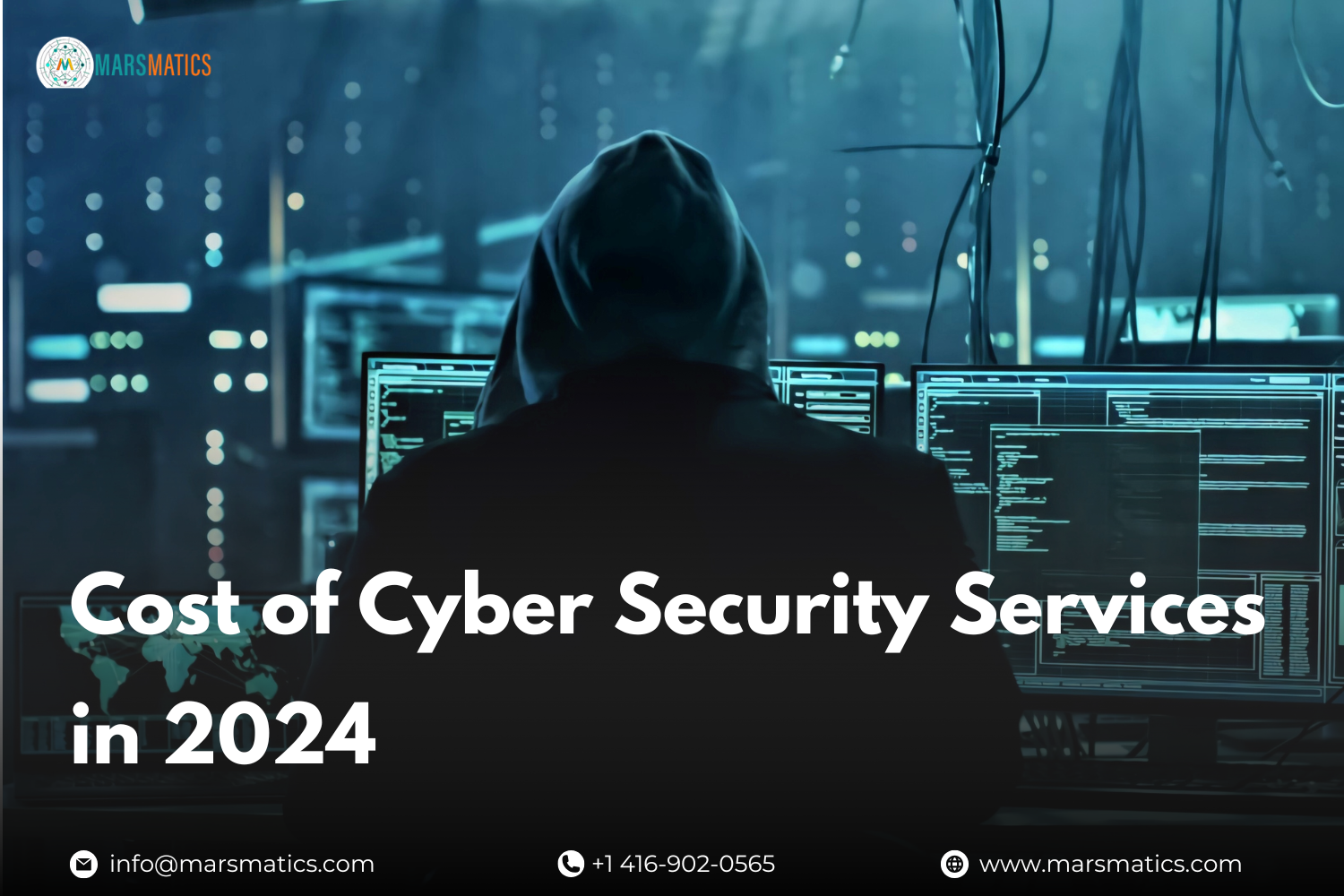Cost of Cyber Security Services in 2024
Have you ever wondered what price businesses are paying to shield themselves from cyber threats? As cyberattacks grow more sophisticated, the cost of failing to protect your digital assets skyrockets. In fact, the average cost of a data breach in 2024 is a staggering $4.45 million, a 15% increase over the last three years, highlighting the urgent need for robust defenses. Small businesses, often the least prepared, are particularly vulnerable, with 43% lacking a formal cybersecurity plan.
Cybersecurity services aren’t just a luxury, they’re a critical investment against the constant risk of cyber threats. From ransomware attacks to phishing scams, organizations need skilled cyber security professionals to stay ahead in this digital arms race. With global spending on cybersecurity predicted to exceed $215 billion this year, prioritizing protection is no longer optional; it’s survival.
By addressing vulnerabilities now, you’ll save far more than you spend later. Ready to discover what goes into the cost of cyber security services and why it’s worth every penny? Keep reading….
Why Cybersecurity is a Critical Investment in 2024?
In 2024, investing in cybersecurity isn’t just about having protective software; it’s about safeguarding your entire business. Cybersecurity threats, like data breaches and ransomware, are more sophisticated than ever, impacting not only finances but also customer trust.
Hiring skilled cybersecurity professionals can help prevent these costly issues, ensuring that sensitive data and systems remain secure. Plus, the ROI on cybersecurity solutions is undeniable: businesses that invest in security measures save significantly more in the long run, avoiding losses from attacks, downtime, and reputation damage.
Average Cost of Cyber Security Services:
Here’s an expanded table with additional cybersecurity services commonly used by businesses in 2024. These prices are averages and can vary based on factors like service level, industry, and company size:
| Cybersecurity Service | Description | Average Monthly Cost (USD) |
| Managed Security Service | Continuous threat monitoring, threat detection, and response | $1,500 – $10,000 (Source: Forbes) |
| Incident Response and Recovery | On-demand assistance to recover from security incidents | $10,000 – $50,000 per incident (Source: Gartner) |
| Vulnerability Assessments & Penetration Testing | Identifies and resolves security weaknesses | $2,000 – $10,000 per assessment (Source: TechTarget) |
| Security Awareness Training | Educates employees on recognizing and preventing threats | $500 – $3,000 per training session (Source: CSO Online) |
| Endpoint & Network Security Solutions | Protects devices and network infrastructure | $20 – $100 per device monthly (Source: ZDNet) |
| Data Loss Prevention (DLP) | Prevents unauthorized data access and sharing | $500 – $3,500 per month (Source: Cybersecurity Ventures) |
| Cloud Security Services | Protects cloud environments and applications | $1,000 – $7,000 per month depending on usage (Source: IDC) |
| Identity and Access Management (IAM) | Manages user identities and access to systems and data | $3 – $8 per user monthly (Source: CSO Online) |
| Threat Intelligence Services | Gathers and analyzes threat data to prevent attacks | $1,500 – $5,000 per month (Source: Infosecurity Magazine) |
| Compliance and Regulatory Consulting | Ensures alignment with industry regulations like GDPR, HIPAA | $2,000 – $8,000 per month (Source: TechRepublic) |
| Firewall Management | Configures and monitors firewalls to protect network perimeters | $500 – $2,000 per month (Source: ZDNet) |
| SIEM (Security Information and Event Management) | Monitors and logs security events across systems | $1,500 – $10,000 per month depending on data volume (Source: Dark Reading) |
These estimated prices offer businesses a guide for planning cybersecurity expenses. By understanding cyber security service pricing, organizations can prioritize services to balance protection needs with budget.
Different Types of Cyber Security Services:

Managed Security Services:
- These services provide ongoing monitoring and management of a company’s security systems. Managed security service providers (MSSPs) monitor for threats, analyze suspicious activity, and respond to potential security incidents, often 24/7. This is ideal for businesses that need constant protection without hiring an in-house team.
Incident Response and Recovery:
- When a security breach happens, incident response teams step in to contain and resolve the issue. They work to recover lost data, fix vulnerabilities, and help the company get back to normal operations quickly. This service is usually needed in emergencies and can help minimize damage.
Vulnerability Assessment and Penetration Testing:
- Vulnerability assessments identify potential security weaknesses in a system, while penetration testing (or “pen testing”) simulates cyber-attacks to test how secure these systems are. This helps businesses find and fix vulnerabilities before attackers can exploit them.
Security Awareness Training:
- This type of service educates employees on cybersecurity best practices, like identifying phishing emails or using strong passwords. Since employees are often the first line of defense, security training reduces the chances of human error leading to a breach.
Endpoint and Network Security Solutions:
- Endpoint security protects individual devices, like laptops and smartphones, while network security protects the entire company network. Together, these solutions prevent unauthorized access and keep data safe across all connected devices.
Data Loss Prevention (DLP):
- DLP tools help prevent sensitive data from being accessed, shared, or stolen by unauthorized users. This is essential for protecting customer information, intellectual property, and financial data.
Cloud Security Services:
- As businesses move to cloud storage and applications, cloud security services protect these digital environments from cyber threats. This includes securing cloud data storage, applications, and access points.
Identity and Access Management (IAM):
- IAM systems manage and control who has access to company data and applications. This service ensures that only authorized employees can access sensitive information, reducing the risk of insider threats.
Threat Intelligence Services:
- Threat intelligence gathers information about current cyber threats, including hacker tactics and emerging risks. This data helps businesses stay one step ahead of potential attacks by improving their defenses.
Compliance and Regulatory Consulting:
- Many industries have strict regulations around data privacy and security (like GDPR and HIPAA). Compliance consulting helps businesses meet these standards to avoid penalties and protect customer data.
Firewall Management:
- Firewalls block unauthorized access to a company’s network. Firewall management services configure and monitor these firewalls, ensuring they’re up-to-date and effective against evolving threats.
Security Information and Event Management (SIEM):
- SIEM tools gather data from different security systems to detect, analyze, and respond to security events in real-time. This service provides a comprehensive view of all security activities, helping businesses quickly identify and respond to threats.
What factors influence cyber security service cost?
Here’s a table format that explains the factors influencing the cost of cybersecurity services:
| Factor | Explanation | Impact on Cost |
| Size and Complexity of the Business | Larger businesses or those with more devices and systems require more protection | Larger businesses with more complexity will face higher costs. |
| Level of Protection Needed | The more advanced the protection (e.g., 24/7 monitoring, incident response), the higher the cost | Basic services are cheaper, while advanced services cost more. |
| Service Type | Different services (e.g., penetration testing, managed security services) have different costs | More comprehensive services, like managed services, cost more than basic ones. |
| Industry Compliance Requirements | Industries like healthcare, finance, and retail require compliance with strict regulations | Compliance services are more expensive due to specialized requirements. |
| Provider Expertise and Reputation | Well-established providers with a proven track record may charge a premium | Experienced providers may charge more for higher-level security. |
| Response Time and Support | Faster response times and 24/7 support come with a higher price tag | Premium support and faster response times increase the cost. |
| Security Tools and Technology Used | The sophistication of the tools used (e.g., AI-driven, encryption) affects pricing | Advanced tools like AI and advanced encryption lead to higher service costs. |
| Number of Users or Devices | The more devices and users that need protection, the higher the service cost | More users or devices result in higher service pricing. |
| Risk Level and Threat Landscape | Businesses in high-risk sectors or facing frequent threats may need more advanced services | High-risk industries face higher costs due to more tailored, advanced solutions. |
This table helps simplify how various factors affect the cyber security service pricing and provides clarity on how businesses can expect costs to vary depending on their specific needs and circumstances.
Alarming Stats About Cybercrime:
The growth of cyber threats has been alarming in recent years. Here are some key statistics highlighting the increase in cybercrime and the risk it poses to businesses globally:
- Cybercrime costs are skyrocketing: The global cost of cybercrime is projected to exceed $10.5 trillion annually by 2025, which is more than triple the $3 trillion reported in 2015. This sharp rise underscores the growing financial impact of cyber threats on businesses and individuals alike.
- Data breaches are at an all-time high: According to the 2023 Verizon Data Breach Investigations Report, 83% of data breaches involved the human element, including social engineering and phishing, highlighting the increasing sophistication of cyber attacks.
- Small businesses are a growing target: Small and medium-sized businesses (SMBs) are increasingly becoming targets for cybercriminals. In 2023, SMBs accounted for 28% of all cyberattacks, showing that cybercriminals are shifting focus to less-secure businesses as entry points for larger attacks.
- Ransomware continues to surge: Ransomware attacks have increased dramatically, with a 400% rise in attacks on businesses over the past few years.These attacks often paralyze operations and demand significant ransoms, causing both financial and reputational damage.
These trends emphasize the growing risk of cyber threats, making it clear that investing in cybersecurity solutions is not just a matter of compliance or protection but a critical part of business continuity and success in 2024.

Is Cybersecurity Worth the Investment?
Cybersecurity has become an essential investment for businesses of all sizes in 2024. With the growing complexity of cyber threats, such as ransomware and data breaches, businesses can no longer afford to ignore the need for robust security systems. According to recent studies, the global cost of cybercrime is expected to exceed $10.5 trillion annually by 2025, highlighting the urgent need to secure data and assets.
Investing in cybersecurity solutions not only mitigates risks but also provides tangible benefits. In fact, the ROI on cybersecurity solutions has been proven to be significant, with businesses recouping their investments through reduced incidents of breaches and their associated costs.
On average, organizations that implement comprehensive security measures see substantial improvements in their security posture and operational efficiency, making the cost of cybersecurity services a worthwhile investment.
For businesses, understanding the cost of cyber threats and the value of a proactive cybersecurity strategy is crucial to maintaining trust with clients and ensuring long-term success in an increasingly digital world.
Final Thoughts and Recommendations:
In 2024, investing in cybersecurity services is more important than ever. The growing risk of cyber threats means that businesses, no matter their size, need to protect themselves from potential data breaches and cyberattacks. While the cost of cybersecurity services can vary depending on the type of protection you need, it’s an essential investment to avoid much higher costs from attacks or downtime.
When it comes to cyber security service pricing, it’s important to understand what you’re getting for your money. Partnering with trusted cyber security service providers can help you find the right protection for your business, ensuring you stay one step ahead of potential risks. In the end, the money spent on cybersecurity will always be worth it when you consider the potential costs of not being prepared.
What are the different types of cybersecurity threats?
Cybersecurity threats include malware, phishing, ransomware, denial-of-service (DoS) attacks, insider threats, and data breaches, each targeting systems in different ways to steal data or disrupt operations.
What is the biggest cyber threat in 2024?
The biggest cyber threat in 2024 is likely to be ransomware, which continues to evolve and disrupt industries by demanding high ransom payments, with businesses struggling to recover from these devastating attacks.
How to find the best cybersecurity expert?
To find the best cybersecurity expert, look for professionals with certifications like CISSP or CISM, relevant industry experience, and a proven track record in handling cybersecurity challenges specific to your business needs.
What are the most common cybersecurity threats?
The most common cybersecurity threats today include phishing attacks, malware, ransomware, and weak password security, all of which exploit human and system vulnerabilities to gain unauthorized access.








